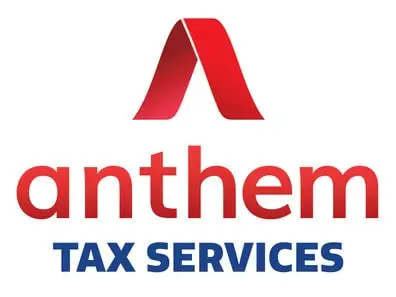
The IRS manages offsets for Federal taxes owed, and if you owe federal back taxes, the IRS can seize your tax refund or other federal payments. The Bureau of Fiscal Service (BFS) of the Department of Treasury conducts the Treasury Offset Program (TOP) and issues IRS tax refunds. All other offsets are managed by BFS. Therefore, BFS can decrease your federal tax refund for other debts through TOP.
What is a Notice of Intent to Offset?
The “Notice of Intent to Offset” tells you that you have a delinquent debt and part or all of your federal payments will be seized by the government. Federal tax refunds are typically offset by the IRS, although they may also accept other forms of federal payments.
If you owe more than the amount of the tax refund, the BFS (Treasury’s Fiscal Service Bureau) can offset your entire tax refund. The IRS will even mitigate potential tax refunds if you don’t fix your tax debt problems.
How does the Treasury Offset Program Work?
TOP is run by the Fiscal Service Bureau (BFS). It is collected by the BFS when you collect a payment from a government agency, such as a federal tax refund.
The BFS also collects information from creditors, such as the Department of Education, about your unpaid debts. Before any offset to payments happens, the BFS must ensure the following:
- The tax identification number and the federal payment name match the delinquent debtor’s details.
- The federal payment is a form of payment qualifying for the TOP
When your tax debt is over 90 days past due, your details will normally be submitted to TOP. The entity to which you owe money must submit you notices and give you an opportunity to appeal the amount owed.
What Types of Federal Payments That Can Be Reduced by the Offset Program?
The payment is most usually offset by federal tax refunds. However, for each of the following fees, the offset program can apply:
- Federal salaries, including military wages
- Federal pension contributions, including military pay for retirement
- Payments you earn as a contractor or supplier doing business with the government
- Travel advances for government workers and reimbursement
- Some payments for government services, such as Social Security benefits (other than Supplemental Security Income)
- A tax refund for state wages
Although certain federal payments can be offset by the BLS, federal laws restrict withholding amounts for various forms of payments. The federal government, for instance, can take your entire tax refund, but can normally take only 15 percent of your payments for social security benefits.
What Types of Debts Can Be Subject to Offset?
When you have any of the following kinds of delinquent debt, these federal contributions can be offset:
- Federal tax debt
- State income tax debt
- Federal student loans previously due
- Non-tax debts of a government agency
- Unpaid child care or commitments relating to spousal support
- You owe a state some unemployment benefits debts
If you wish to get in good standing with federal or state entities listed in the offset notice, we can help you navigate the process.
What do I Do If I Receive a Notice of Intent to Offset My Tax Refund?
First, to confirm that it is right, review the information in the offset notice. You don’t need to do anything if you don’t contest the amount owed and don’t want to attempt to stop the offset. If you’re going to contest the offset, depending on the circumstances, there are a few distinct choices open to you and we can assist you with the navigating the document by phone ((855) 749-2859) or email.
What if I want to Dispute the Amount Owed?
To question the amount you owe, contact the agency mentioned in the offset notice. Before the offset takes place, you can have a limited timeframe to question the amount.
When you have paid off the debt or you do not owe the debt, it is the duty of the organization receiving the debt to tell BFS to avoid the offset or to reimburse for sums wrongly offset. Don’t directly contact the IRS; they are not in charge of the TOP. Therefore, the IRS will not support you if the debt does not pertain to money owing to the IRS. Only if the BFS letter specifies an amount different from the refund amount indicated on your tax return should you call the IRS.
What happens if I Filed a Joint Return and My Spouse’s Separate Debt Caused the Offset?
To claim your share of the joint tax refund, you can claim an injured spouse allocation. To file an injured spouse allocation, use Form 8379.
After the IRS processes your tax return, you can file Form 8379 along with your tax return or submit it. When you report an injured spouse allocation, expect your tax return to take longer to process, up to 14 weeks.
To prevent a refund offset for your spouse’s debts, you may also use the Married Filing Separately filing status, but first, you may want to reach out to us regarding the pros and cons of this method.
What happens if the Offset Applies to Federal Student Loans?
Within 65 days of obtaining the Notice of Intent to Offset, you can dispute the offset. You may be able to avoid the offset if you are making the necessary payments or have paid the full balance. To request a review before the offset happens, follow the directions on your offset notice.
How to Avoid IRS Offsets
When you receive an offset notice, in order to stop the offset, you would usually need to pay the full balance due within 60 days. If you have applied for bankruptcy before the offset, due to the automatic hold on collections during bankruptcy, you may be able to prevent the offset.
By making contributions or trying to settle your delinquent debt, you may be able to avoid an offset. This, however, does not guarantee that federal payments will not be offset by the government. In general, the IRS continues to cover the tax refunds by using an IRS installment plan to make monthly payments.
To minimize the amount you will receive in your tax refund check, you can change your tax withholding or projected tax payments, which will lower the amount available for offset. But don’t reduce withholding too much, otherwise you can have to pay fines for underpayment.
To get assistance with settling your tax liability, avoiding IRS offsets and tax debt relief, contact us today by phone (1-(855) 749-2859) or email.
The IRS manages offsets for Federal taxes owed, and if you owe federal back taxes, the IRS can seize your tax refund or other federal payments. The Bureau of Fiscal Service (BFS) of the Department of Treasury conducts the Treasury Offset Program (TOP) and issues IRS tax refunds. All other offsets are managed by BFS. Therefore, BFS can decrease your federal tax refund for other debts through TOP.
What is a Notice of Intent to Offset?
The “Notice of Intent to Offset” tells you that you have a delinquent debt and part or all of your federal payments will be seized by the government. Federal tax refunds are typically offset by the IRS, although they may also accept other forms of federal payments.
If you owe more than the amount of the tax refund, the BFS (Treasury’s Fiscal Service Bureau) can offset your entire tax refund. The IRS will even mitigate potential tax refunds if you don’t fix your tax debt problems.
How does the Treasury Offset Program Work?
TOP is run by the Fiscal Service Bureau (BFS). It is collected by the BFS when you collect a payment from a government agency, such as a federal tax refund.
The BFS also collects information from creditors, such as the Department of Education, about your unpaid debts. Before any offset to payments happens, the BFS must ensure the following:
- The tax identification number and the federal payment name match the delinquent debtor’s details.
- The federal payment is a form of payment qualifying for the TOP
When your tax debt is over 90 days past due, your details will normally be submitted to TOP. The entity to which you owe money must submit you notices and give you an opportunity to appeal the amount owed.
What Types of Federal Payments That Can Be Reduced by the Offset Program?
The payment is most usually offset by federal tax refunds. However, for each of the following fees, the offset program can apply:
- Federal salaries, including military wages
- Federal pension contributions, including military pay for retirement
- Payments you earn as a contractor or supplier doing business with the government
- Travel advances for government workers and reimbursement
- Some payments for government services, such as Social Security benefits (other than Supplemental Security Income)
- A tax refund for state wages
Although certain federal payments can be offset by the BLS, federal laws restrict withholding amounts for various forms of payments. The federal government, for instance, can take your entire tax refund, but can normally take only 15 percent of your payments for social security benefits.
What Types of Debts Can Be Subject to Offset?
When you have any of the following kinds of delinquent debt, these federal contributions can be offset:
- Federal tax debt
- State income tax debt
- Federal student loans previously due
- Non-tax debts of a government agency
- Unpaid child care or commitments relating to spousal support
- You owe a state some unemployment benefits debts
If you wish to get in good standing with federal or state entities listed in the offset notice, we can help you navigate the process.
What do I Do If I Receive a Notice of Intent to Offset My Tax Refund?
First, to confirm that it is right, review the information in the offset notice. You don’t need to do anything if you don’t contest the amount owed and don’t want to attempt to stop the offset. If you’re going to contest the offset, depending on the circumstances, there are a few distinct choices open to you and we can assist you with the navigating the document by phone ((855) 749-2859) or email.
What if I want to Dispute the Amount Owed?
To question the amount you owe, contact the agency mentioned in the offset notice. Before the offset takes place, you can have a limited timeframe to question the amount.
When you have paid off the debt or you do not owe the debt, it is the duty of the organization receiving the debt to tell BFS to avoid the offset or to reimburse for sums wrongly offset. Don’t directly contact the IRS; they are not in charge of the TOP. Therefore, the IRS will not support you if the debt does not pertain to money owing to the IRS. Only if the BFS letter specifies an amount different from the refund amount indicated on your tax return should you call the IRS.
What happens if I Filed a Joint Return and My Spouse’s Separate Debt Caused the Offset?
To claim your share of the joint tax refund, you can claim an injured spouse allocation. To file an injured spouse allocation, use Form 8379.
After the IRS processes your tax return, you can file Form 8379 along with your tax return or submit it. When you report an injured spouse allocation, expect your tax return to take longer to process, up to 14 weeks.
To prevent a refund offset for your spouse’s debts, you may also use the Married Filing Separately filing status, but first, you may want to reach out to us regarding the pros and cons of this method.
What happens if the Offset Applies to Federal Student Loans?
Within 65 days of obtaining the Notice of Intent to Offset, you can dispute the offset. You may be able to avoid the offset if you are making the necessary payments or have paid the full balance. To request a review before the offset happens, follow the directions on your offset notice.
How to Avoid IRS Offsets
When you receive an offset notice, in order to stop the offset, you would usually need to pay the full balance due within 60 days. If you have applied for bankruptcy before the offset, due to the automatic hold on collections during bankruptcy, you may be able to prevent the offset.
By making contributions or trying to settle your delinquent debt, you may be able to avoid an offset. This, however, does not guarantee that federal payments will not be offset by the government. In general, the IRS continues to cover the tax refunds by using an IRS installment plan to make monthly payments.
To minimize the amount you will receive in your tax refund check, you can change your tax withholding or projected tax payments, which will lower the amount available for offset. But don’t reduce withholding too much, otherwise you can have to pay fines for underpayment.
To get assistance with settling your tax liability, avoiding IRS offsets and tax debt relief, contact us today by phone (1-(855) 749-2859) or email.


